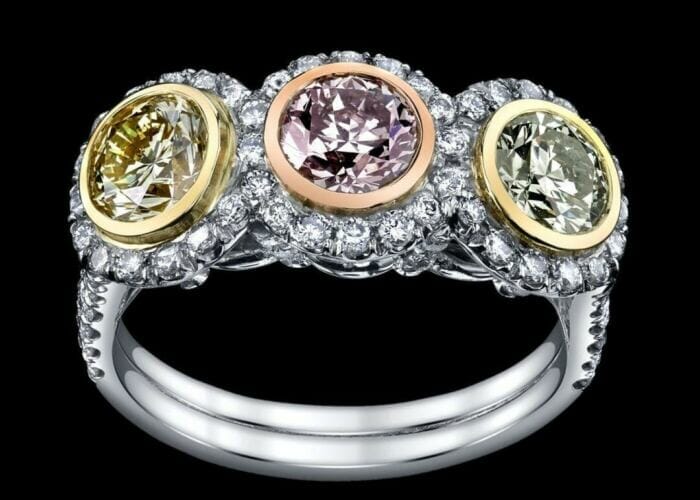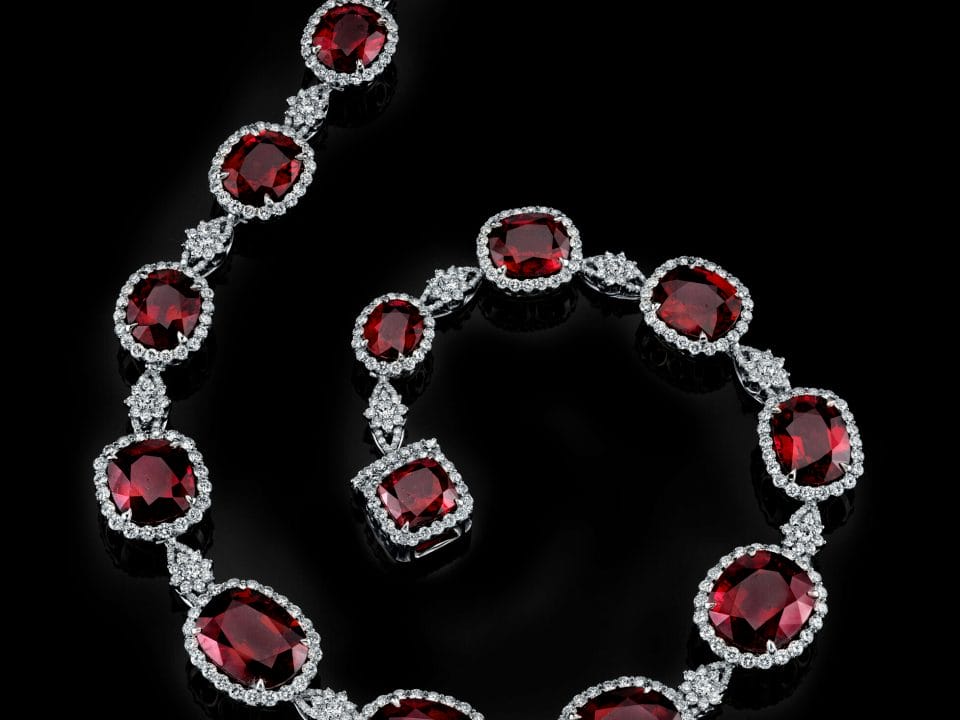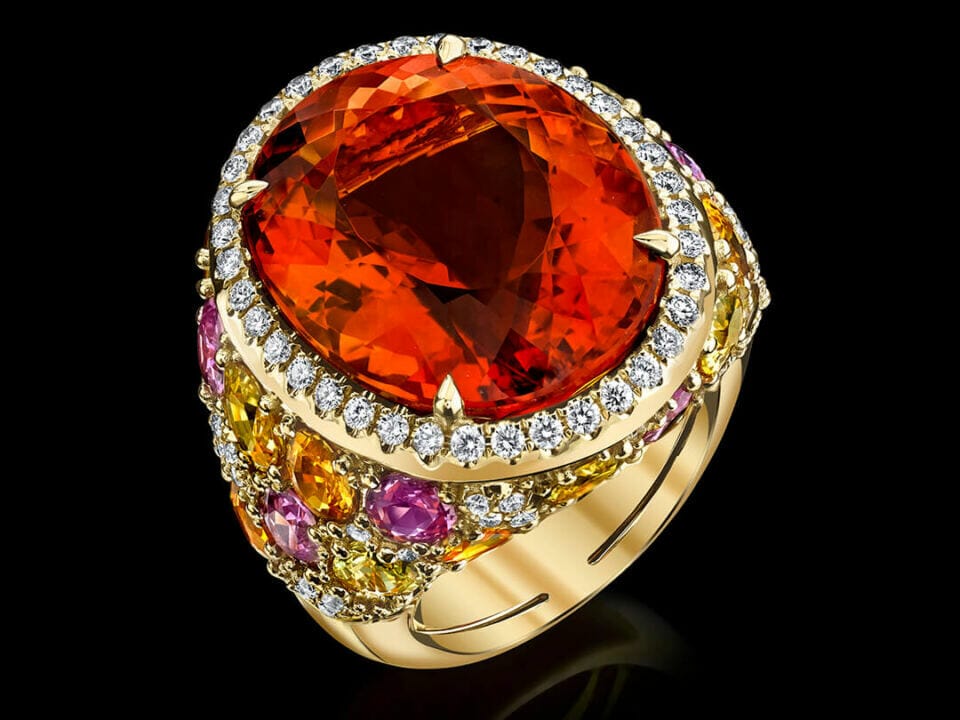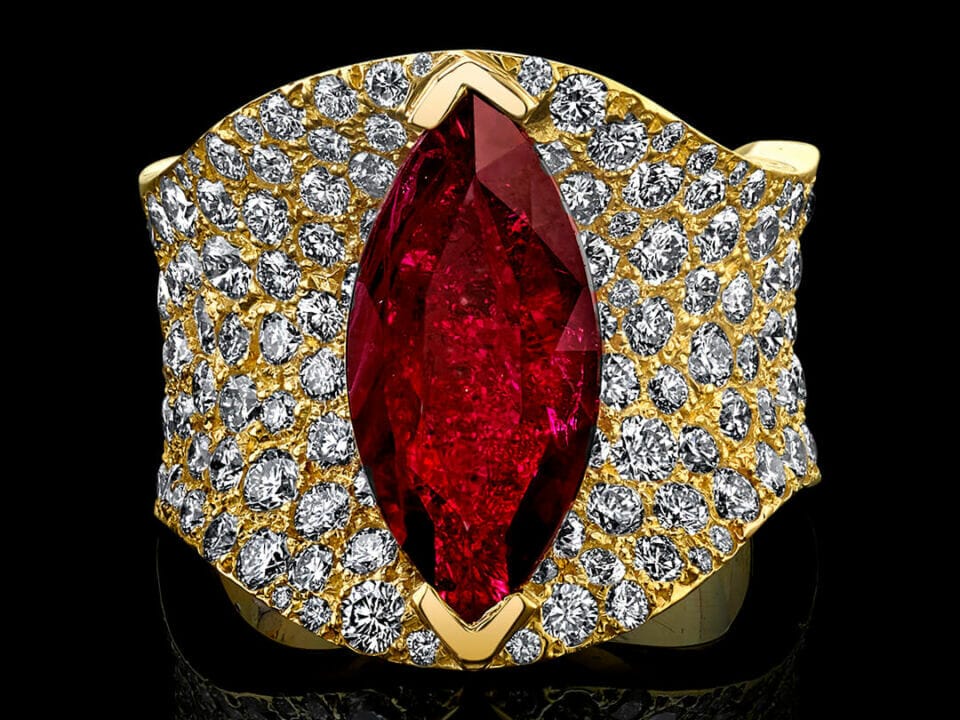Diamonds occur in an array of colors – from pure whites and soft pinks and blues to brilliant hues of purple and red. Within such variation, it is easy to forget that diamonds are in essence pure and simple in composition, requiring only one element as it crystallizes: carbon. Deep within the earth’s mantle, the element is shaped under tremendous pressure through a formation process with variables ranging from temperature to surrounding environments. Thus, through chance and serendipity, diamonds occur in such variety – as structural impurities, inclusions and even radiation enable these wonders of nature to take color in the full spectrum.
BLUE
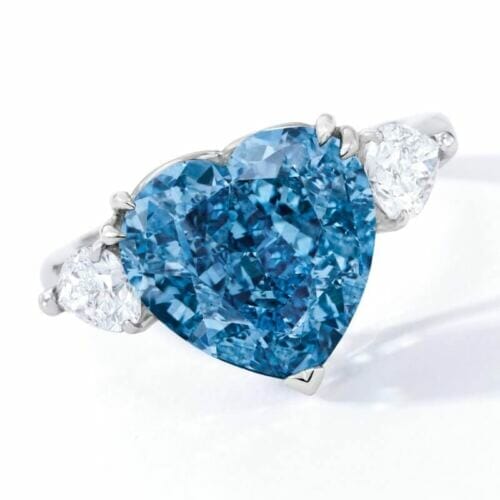
Throughout history, blue diamonds have been the stuff of legends. Among the many storied examples include a dark blue diamond sold in the seventeenth century sold by Jean Baptiste Tavernier to King Louis XIV of France, a stone originally called the Tavernier Blue, and then the French Blue as a part of the French Crown Jewels. Then there’s the famed Hope Diamond, purchased by Henry Phillip Hope in 1830, which research studies suggest may have been recut from the lost French Blue, only adding to its mystique.
The distinctive hue of the blue diamonds is often attributed to the trace of boron within the crystal, and Type IIb classification means that the diamond contains few to no nitrogen impurities. The Hope Diamond is an example of Type IIb, as is Lot 1654 a heart-shaped fancy vivid blue diamond of 5.04 carats. Because of its formation, every faceting process of a blue diamond demands extreme care and precision. The rough will likely be asymmetrical with color zoning, which presents unique challenges to the cutter as they balance the best color, carat weight and the type of cut for each stone.
PINK

Pink diamonds are particularly mysterious even among color diamonds. Theories dive deep into the crystal structure of the stone. While nitrogen and boron are responsible for the vivid hues of yellow and blue diamonds, respectively, there is no evidence that pink diamonds receive their color from trace elements. Rather, the crystal structure of the stone selectively absorbs light as a result of an idiosyncratic lattice defect which results in an unusual arrangement of atoms in the crystal. These happy anomalies occasionally cause pink graining in the diamond crystal – a perfectly brilliant display of imperfection. The intensity of the color depends on the amount of pink graining present. The color is generally concentrated within parallel narrow bands called glide planes which diamond cutters intricately orient perpendicular to the table in order to maximize body color.
The diversity of pink hues adds to the diamond’s character of distinctive individuality. Pink diamonds often have a secondary color such as orange, purple or brown. While such colors are highly attractive and valuable, rarest among pink diamonds are those with no modifying color. The pink occurs across range of hues. However, only at certain saturation and tones can the diamonds attain classification as pink within the reddish purple to orange hue range. Lot 1807 represents the most exemplary hue, tone and saturation, receiving the highest color grading from GIA for pink diamonds, fancy vivid pink. Bearing a lovely heart shape, this stone possesses internally flawless clarity and most importantly, stunning fancy vivid pink color, accentuating the immaculate nature of this highly collectible colored diamond.
YELLOW
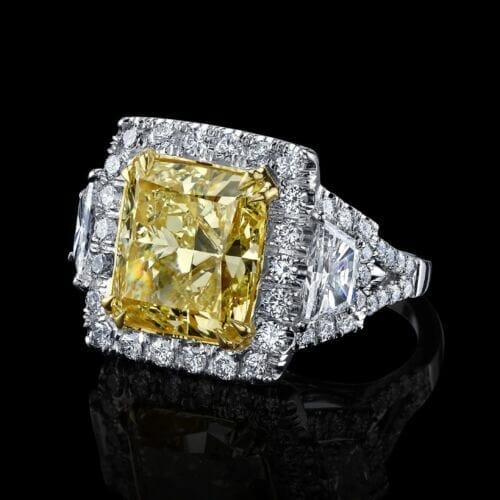
Color diamonds contain impurities or structural defects within the chemical composition. In the case of yellow diamonds, nitrogen is incorporated into their carbon crystal structure. These nitrogen impurities give a diamond its yellow color as they modify light and absorb the blue part of the visible spectrum. When there is a large amount of nitrogen present within the stone the diamond ceases to become a M-Z colored diamond and becomes a fancy color diamond. All fancy color diamonds follow the same color grading scale: Fancy Light, Fancy, Fancy Intense, and Fancy Vivid. As the color concentration increases within the stone, so does its value.
‘All the colors of flowers and foliage and even the blue sky and the glory of the sunset clouds, only last for a short time, and are subject to continual change, but the sheen and coloration of precious stones are the same to-day as they were thousands of years ago and will be for thousands of years to come. In a world of change, this permanence has a charm of its own that was early appreciated.’
– G.F. KUNZ, 1913
OTHER COLORS

In addition to the above three colors, different interactions of rare earth elements, structural shifts and even natural radiation may result in surprising color combinations, with diverse modifying colors that represent every hue in the spectrum. Colour diamonds are a wonder of nature, each possessing a unique composition and variations that dictate rarity, value and desirability. Find more of these most radiant gems from Sotheby’s Hong Kong Magnificent Jewels auction on 10 July 2020.
From Sotheby’s

